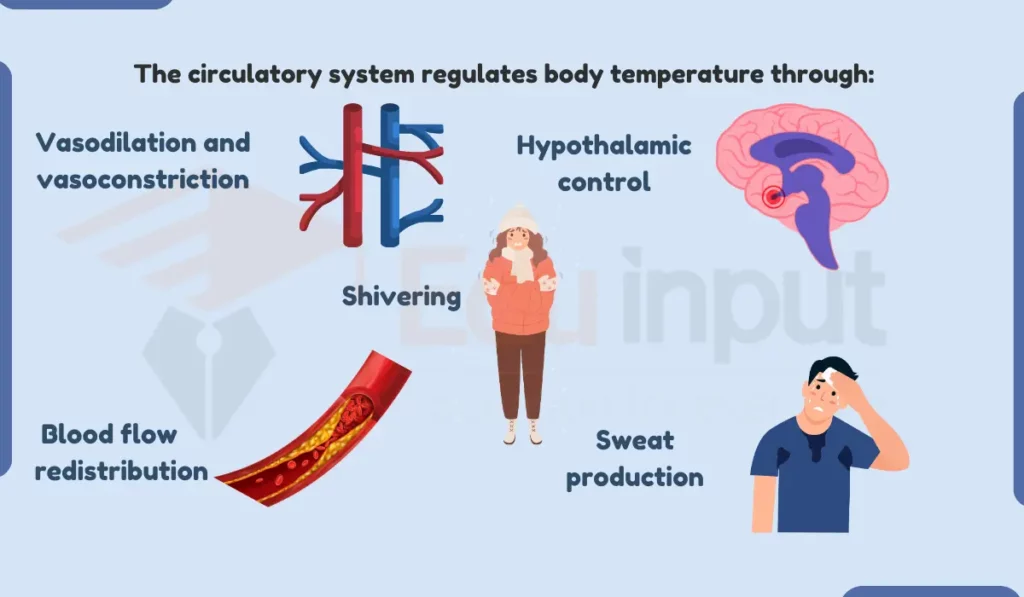How Circulatory System Regulates Body Temperature
The circulatory system regulates body temperature through a variety of mechanisms include vasodilation and vasoconstriction, sweat production, shivering, and blood flow redistribution. The hypothalamus coordinates these adjustments to maintain optimal body temperature within a normal healthy range.

5 Ways How Circulatory System Regulates Body Temperature
Here is How Circulatory System Regulates Body Temperature:
1. Vasodilation and vasoconstriction
The circulatory system can regulate body temperature by dilating or constricting blood vessels in the skin. When body temperature rises, blood vessels in the skin dilate or widen. This increases blood flow to the surface of the skin, which allows more heat to escape into the environment through radiation, convection, and conduction.
When body temperature drops, blood vessels in the skin constrict, or narrow. This reduces blood flow to the surface of the skin, which helps to conserve body heat.
2. Sweat production
Sweat production is another way that the circulatory system helps to regulate body temperature. When body temperature rises, the hypothalamus, a part of the brain that controls body temperature, signals the sweat glands to produce sweat. Sweat is a watery liquid that contains salts and other minerals.
As sweat evaporates from the skin, it absorbs heat from the body, which helps to cool it down. The circulatory system delivers water and nutrients to the sweat glands, which are necessary for sweat production.
3. Shivering
Shivering is another way that the body can generate heat. When body temperature drops, the hypothalamus signals the muscles to contract involuntarily, which causes shivering. Shivering is a type of muscle activity that generates heat.
The circulatory system delivers oxygen and nutrients to the muscles, which are necessary for shivering.
4. Blood flow redistribution
The circulatory system can also redistribute blood flow to help regulate body temperature. In hot conditions, more blood is directed to the skin to help dissipate heat. In cold conditions, more blood is directed to the core of the body to help conserve heat.
5. Hypothalamic control
The hypothalamus is the central control center for body temperature regulation. It receives inputs from sensors throughout the body about internal and external temperatures.
The hypothalamus then coordinates adjustments of the circulatory system, along with other systems, such as the respiratory system and the nervous system, to maintain optimal body temperature.

 written by
written by 





Leave a Reply